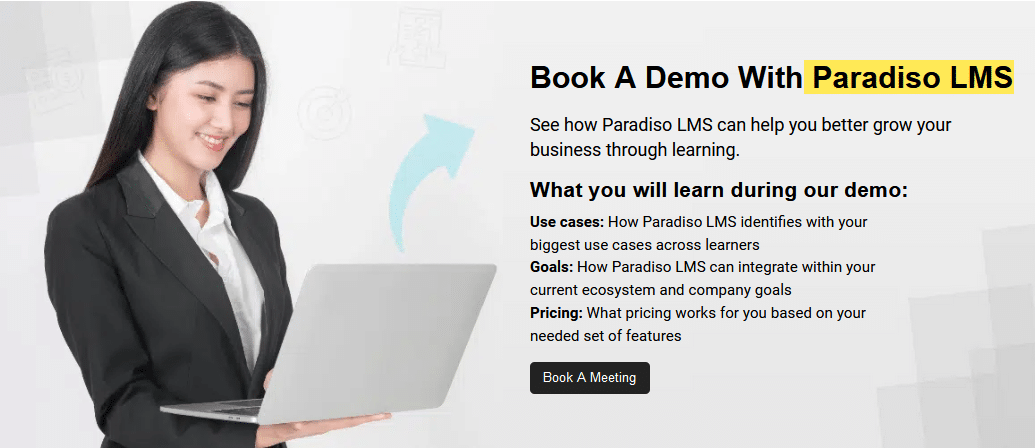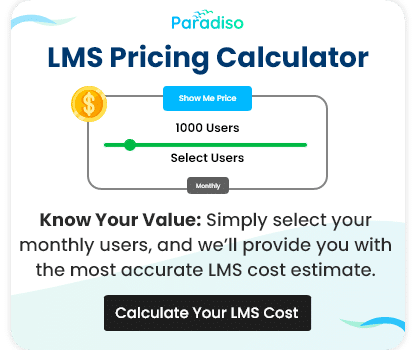Handling many learners and their assessments is quite a task for any organization or institute. However, managing the courses and curriculum can be made easier with a Course Management System.

Course Management Software in 2025
A training company or an institute will typically opt to buy a course management system or software (CMS) when they are providing more than five courses per month and manual administration is becoming an excessive financial and time burden for the company. Using a CMS is an improvement over using a variety of technologies, like calendars, email, Excel spreadsheets, and more.
What is a Course Management System?
A Course Management System (CMS) is a specialized enterprise software designed to automate and optimize the management of Instructor-Led Training (ILT) and virtual Instructor-Led Training (vILT).
Administrative tasks like scheduling, registration, invoicing, and emailing can be automated with a content management system (CMS). All procedures, data, and communication are intended to be centralized through it, so everything is kept in one system.
What is course management?
The process of optimizing and streamlining all of your back-office procedures for your ILT/vILT training courses is called course management. Course management software is particularly designed for training organizations, whether corporate training departments, for-profit training companies, or associations.
Also, to clarify, course management systems may be called in other names: course management software, training course administration system, and training management system. These are all referring to the same type of system.
What is the purpose of a Course Management System?
The purpose of a course management system is to offer a consolidated platform for managing course materials, promoting communication, and monitoring student progress, with the aim of optimizing and improving the educational process.
A course management system facilitates effective teaching and learning by combining educational tools and resources, which leads to a more structured and successful academic experience.
Key features of the Course Management System
Course management software should include features like financial planning, operations and logistics, resource management, course scheduling, performance, reporting, and sales cycle management to enhance productivity.
The common features mentioned below can assist you in managing your ILT / vILT training activity effectively and efficiently.
- Course Content management: Arranging and distributing readings, lecture notes, and multimedia materials.
- Assignment Submissions: Simplify the process for students to turn in, monitor, and grade their assignments.
- Gradebook: An integrated gradebook makes it easy to maintain and compute grades.
- Communication Tools: Promote conversation using message boards, announcements, and discussion forums.
- Assessment Tools: Make and distribute tests, surveys, and quizzes.
- Accessibility: Ensure that every learner, including those with challenges, has equal access to resources and tools.
- Integration Capabilities: Easily integrate with additional learning resources and systems.
- Mobile Access: Make course materials and resources available to students on the go through mobile devices.
Course Management System vs. Learning Management System & Talent Management System
The administration and delivery of material in professional development and education are becoming increasingly dependent on digital means. In this situation, it is crucial to comprehend the distinctions between a Talent Management System (TMS), a Learning Management System (LMS), and a Course Management System (CMS).
CMS vs LMS
A learning management system (LMS) can help manage and deliver an e-learning course. Front-end communication with the learners is at the core of this. This is clearly different from course management systems, which assist firms in optimizing and streamlining back-office training processes for virtual and instructor-led training (vILT) and instructor-led training (ILT). Also Read, CMS vs LMS: Whats the difference?
CMS vs TMS
For HR professionals handling applicants during the recruiting, screening, and onboarding phases, a talent management system is a more all-purpose tool for strategically managing talent. Whatever software is used, it shouldn’t be the main training tool, even though some instructional components may be included. Here’s a table highlighting the key differences among a Course Management System (CMS), Learning Management System (LMS), and Talent Management System (TMS):
| Feature/Aspect | Course Management System (CMS) | Learning Management System (LMS) | Talent Management System (TMS) |
|---|---|---|---|
| Primary Focus | Academic course organization and management | Comprehensive learning and training management | Talent lifecycle management in organizations |
| Main Users | Instructors, students | Instructors, students, corporate trainers, employees | HR professionals, managers, employees |
| Key Functions | Content distribution, assignment management | Content delivery, tracking, reporting, assessments | Recruitment, onboarding, performance management |
| Assessment Tools | Basic quizzes and assignments | Advanced quizzes, tests, and surveys | Performance reviews, skill assessments |
| Communication Tools | Forums, messaging, announcements | Forums, messaging, announcements, video conferencing | Feedback systems, communication for development plans |
| Progress Tracking | Student progress and grades | Detailed learning progress, certification tracking | Career development tracking, succession planning |
| Integration | Limited to educational tools | Extensive integration with educational and corporate tools | Integration with HR systems, learning platforms |
| User Experience | Focused on academic courses | User-friendly for both education and corporate training | HR-centric with employee self-service portals |
| Mobile Access | Basic mobile access | Enhanced mobile access for learning on-the-go | Mobile access for HR functions and employee engagement |
| Example Use Cases | University course management | Corporate training programs, online courses | Talent acquisition, employee development programs |
Who uses course management software?
Besides educational institutes, training companies that employ course management software, whether part of or independent of a business part of or independent of a business, employ course management software. A training firm, an extended enterprise, or a learning and development department (L&D) will typically oversee training.
A Course Management System (CMS) is primarily used by:
- Educational Institutions: CMS is used by schools, colleges, and universities to improve student learning and expedite the administration of their courses.
- Learning and Development (L&D) departments: are typically an extension of the human resources department and function as the internal training arm of a business.
- Training company: An outside organization that specializes in administering an L&D department’s training duties. They oversee general training programs for the staff members of their clients.
- Extended Enterprise: Training outside partners who are a part of the company’s wider network
What is the best Course Management System?
In a nutshell, it depends on what you require. A course management system or course management software that meets the objectives and needs of your company and can be integrated with the other learning technologies you use is the ideal choice.
Top contenders include Moodle, Blackboard, and Canvas. Canvas’s powerful integration capabilities and easy-to-use interface are highly recognized. Moodle is a preferred choice for educational institutions with needs because it is open-source and allows for much customization and flexibility with needs. Blackboard is well respected because of its robust support services and extensive feature set.
Why is Paradiso CMS Best?
Paradiso CMS is considered the best due to its comprehensive features, user-friendly interface, and robust customization options. Its flexibility and functionality are increased by its smooth integration with a range of third-party tools and platforms. Paradiso CMS has robust communication tools to promote teamwork and participation, supports a large variety of multimedia content, and provides sophisticated statistics for monitoring student development. Institutions of different sizes can use it thanks to its scalable architecture, and its robust training and support services guarantee a seamless setup and use. Paradiso CMS is a great option for maximizing learning experiences and results because of these features. To explore this in more depth, you can request a demo.










